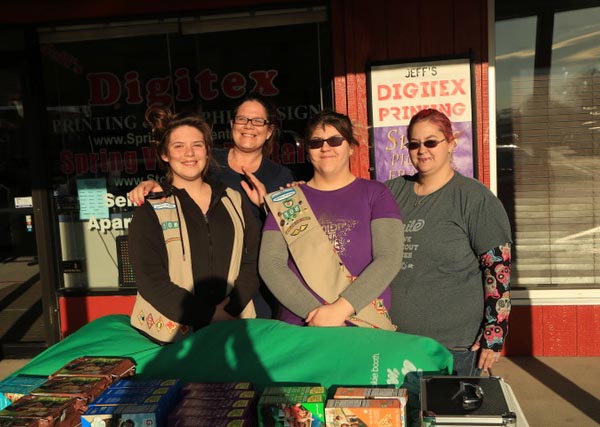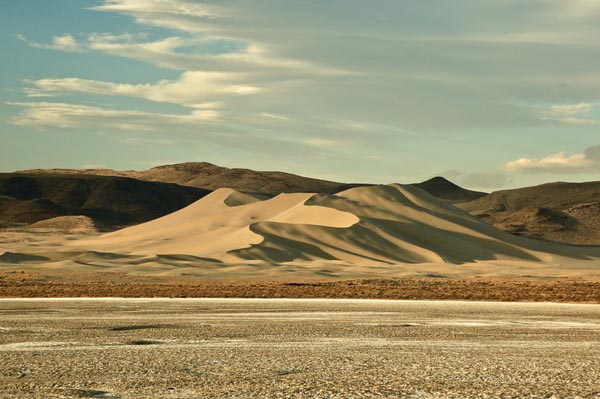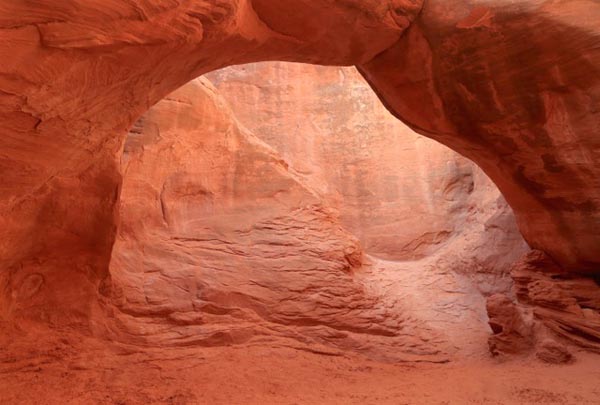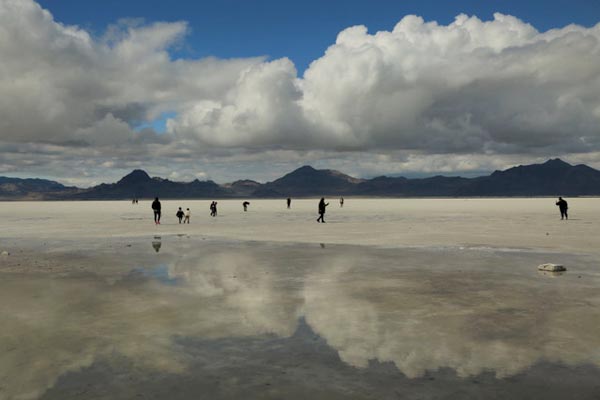Interviewsand Articles
 The Journey Home
The Journey Home
by Leslie Curchack, May 18, 2020

In early March, I prepared to travel east on a solo road trip to Utah, looking for beauty with my earth-loving lens and wanting to feel my life opening up, rather than closing down, as I approached my 75th birthday. In this increasingly polarized world, I also wanted to engage with people outside of my insular social bubble. The corona virus concerns were acute, but nothing was closed down yet. Though I wavered, my momentum was strong and I headed off with food supplies, hand sanitizer and a sleeping bag laid out in the back of my car.
My time on the road and in the red rock country was beautiful and transformative. The vast stretches of basin and range in Nevada and the mind-blowing rock formations of Utah were a good backdrop to the daily news, and to a growing realization of a great shift in life as we’ve known it. Witnessing the grand scales of time, space and matter in the landscape as I drove and hiked every day, I kept asking: "What can you tell us? How can you help us?" The message I got back was simple: be humble, stay steady.
"How the heck will I meet people and have conversations?" I wondered, as I approached Fallon. I was on a long stretch with endless casinos, a billboard about Nevada’s meth epidemic, bouncing tumbleweeds, Breakaheart Rd, gun shops, a turnoff to a Paiute Shoshone colony, a Veterans Healing camp, and another billboard saying, “Natural doesn’t always mean safe for a baby.” When I reached downtown, I passed two moms and their 15-year-olds selling Girl Scout cookies on Maine Street and quickly swung my car into a parking space.
After buying cookies, I asked them what the billboard about the baby meant. They explained that the recent legalization of cannabis made some people careless about what they allow in their babies' bodies. When I asked what divides people in their town of 1500, they answered unanimously religion. Mormons and Catholics both have big churches, and are competitive. The mom with multiple piercings in her lips and nose said, ”We just don’t talk about religion here. It’s a good community, a good place to raise kids; we have parks and bowling and car racing—lots to do.”
I appreciated her decision to rise above differences in a community for the sake of the kids. When I brought up the meth problem, the other mom said, “We stick with our kids all the way so they won’t get in trouble.” True enough. There they were, moms and daughters, together in a chilly wind that whipped up their green tablecloth, everyone looking happily bonded. Save the children, save the world.

I felt my inner landscape shifting from expecting to meet drug-culture types and wild-west lawlessness to admiration for the strong commitments and emotional intelligence of these women. The enthusiasm of the teens for their region's prize-winning Hearts of Gold cantaloupes was touching; they want me to come back in the summer to taste them because “there’s totally nothing like them." They were, however, annoyed about their school closing down. "That virus is never going to get here.” Then they looked at me suspiciously and edged away a fraction, reminding me I was traveling at a time when people were beginning to shut down instead of open up.
I was grateful to have met these women. They gave me a vivid sense of contact with people “other" than myself, just 100 miles across the California border, and a humbling inner movement from judgment to respect.
Leaving Fallon, I drove another hour before dark. On a stretch of playa called Four-Mile Flat, a startling vision appeared with fantastic shadows and shapes in the late light: Sand Mountain. The sun was setting fast, and because there was no shoulder, I simply stopped the car in the middle of the road, jumped out and ran up and down taking photos. No matter that there were no other cars to be seen, I felt bold in putting on the brakes and leaping out to greet the unexpected beauty.

Too often I have a fleeting encounter with a person, or sight, or moment that calls me to stop and know more. Yet stuck in some fear or inhibition, I keep moving and miss the chance to discover something. But on Highway 50 that evening, I followed the call to capture the ephemeral magic of that wild sand dune. As I drove off, it struck me that this was exactly what I'd hoped for—situations that inspired me to embrace more courageous and spontaneous parts of myself.
Climbing the sagebrush-covered rise to Great Basin National Park, the view in the rearview mirror was so splendid I had to stop and look back. The parallel mountain chains separated by long narrow valleys, rolling away in waves to the west under dramatic skies, had provided an austere and elevating meditation as I’d crossed Nevada.
Too cold to camp up in the park, I settled at a small inn down on the other side of the mountain. Before going to sleep, I thought about some of the characters I’d met. Jeff, 60, wandered into the small mountain town of Austin from Vegas fifteen years ago and stopped for a drink. He stayed because of Mary, the petite bartender who took on two brawling drunks single-handedly and kicked them out that night. He and Mary became best friends and he got hooked on “the quiet, and the pure soul of the place.” A pleasant woman running the gas station in Austin who cares for an Alzheimer’s husband, when asked what she liked best about living there, also said, “Oh, the quiet. The quiet is so important.”
Katie, a young single mother who manages the old fashioned drugstore in Ely came from LA with her mixed-race baby five years ago. When I walked up to the soda fountain, I found her and her co-worker, in a spirit of great mirth, showing her little boy photos of herself pregnant to prove she was his mother. She finds Ely a loving and supportive community and though the Mormons and Catholics have differences here, too, they still take care of each other with food banks and community fundraisers. There's a meth problem and opium is getting bad, too, but Katie sticks with her work family and her church family and is happy. Apropos of nothing except maybe sizing me up further, she added, “We’re more conservative here, like Utah.” I hadn’t expected her to see beneath my careful neutrality, but I must have been making assumptions again. It took some effort to engage with these strangers, but the struggle was worth it —each person taught me something about the rewards of connection, and I want to continue this kind of reaching out.
The minute I entered Utah, the red rocks began showing up. Layers of red Entrada Sandstone alternate with layers of buff Navajo Sandstone; they’re like a giant layer cake that sits atop a vast salt bed, whose unstable movements are responsible for the striking rock formations throughout the Colorado Plateau. The Arches National Park brochure concludes this explanation by saying, “This is the geological story…probably. The evidence is largely circumstantial.” What a great example of humility, I thought—and from science, no less!

In Arches, the luminous beauty of a red sandstone arch was found after several turns through a deep slot canyon, and it seemed I stood before a passageway into the silently beating heart of Earth itself. The intense rosy glow of this sacred portal drew me in to a deep stillness and oneness. I felt a powerful connection to the forces of creation that generated this planet and the emergence of life upon it. I understood that everything is bound by space and time and relationship, and that deep structures, proportions and complexities connect every single part to the whole. This moment spoke to the essence of my search on this journey, a search to understand the right relationship of my life to the world, to myself, to others, to my art, to death. I was grateful to have slipped through a last window of opportunity to make this trip and to receive these revelations.
The immensity and vastness of Canyonlands are jaw-dropping. Here is where time, silence and scale speak to inform us of our place in the world, and indeed while there I keenly felt my existence as a very tiny and temporary human being. We are so small. Though we have powerful tools of intelligence, imagination, will, and hope—which are good capacities to persevere against the odds—in the planetary timescale we may turn out to be disposable unless we make significant changes in how we live in relation to the Earth and each other.
There is no fixed DNA for social values, which are always changing and morphing, so why not a shift towards unity and cooperation? Why not give rein to believing in the best of our nature? It is the necessary leading edge to the actions that must be taken, and extends to the imperative for human society to learn to live in rhythm with the natural world, rather than against it.
My focus as an artist has grown towards using the beauty and harmonies of nature as a stepping off place for a new cultural story, one which sees a shift from exploitation to cooperation, and the integration of our presence into a larger cosmology of interconnectedness. My art has grown me as an activist and now at times I cannot tell where one begins and the other ends.
Turning back home, now on Highway 80, I found people practicing social distancing on the Bonneville Salt Flats. The extensive saltpan is liquid in places and the reflections give an illusion of humans walking on a narrow strip between sky and water. Indeed, we inhabit a very small layer of Earth, somewhat like being on the shell of an egg. The huge geological features I’d been gaping at are just part of the thin crust of the Earth—a midsize planet of the solar system in a small part of a galaxy, floating among billions of galaxies in the universe. I have no difficulty finding humility in that frame of reference, and oddly I also find joy, as in, “Oh my god, this is what I am a part of!” The astonishing nature of relativity and the curious promise of limited time, at their best, deliver awe and reverence for the sheer miracle of being.

Crossing into California once again, I carried so many new impressions to digest as well as the simple message of staying steady and being humble. This journey was exactly what I needed at my three-quarter century landmark. Seventy-five years is nothing against the immensities I had witnessed, but it is a lot in the living of one treasured life.
I drove in tandem with a freight train for a good thirty minutes on the last leg of my homeward trip, transfixed by the words of a song I was listening to:
How can the mind transcend,
How can the heart describe,
We light a candle every day.
I ask the question, even when the why seems hollow,
And breathe the silence in that usually will follow.
Loss and grief will be part of the passage through these corona virus times, compounding the ecological grief that has been building for decades. Shakespeare’s question from Sonnet 65 comes to mind: "How, with this rage, shall beauty hold a plea?” And with this pain in our midst, we could ask, “How shall love hold a plea?" Yet surely, beauty and love do hold a plea in this mystery we are part of.
Breathe. Yes, breathe, for there are no real answers except perhaps to love harder.
About the Author
Leslie Curchack is a licensed MFT and a nature photographer. Bringing her photographic art into service for the earth, since 2011 she has produced an annual eco calendar “In Love With Earth” to benefit Daily Acts, a nonprofit sustainability group. Her aim is to evoke a sense of our deep connections to the natural world, and to inspire a wish to live and act from this understanding. These photos of nature’s perishable grace and unity are shared in exhibits and publications throughout the Bay Area, as well as on her website.
SUBSCRIBE NOW
TO OUR MONTHLY NEWSLETTER









Share Your Comments and Reflections on this Conversation: